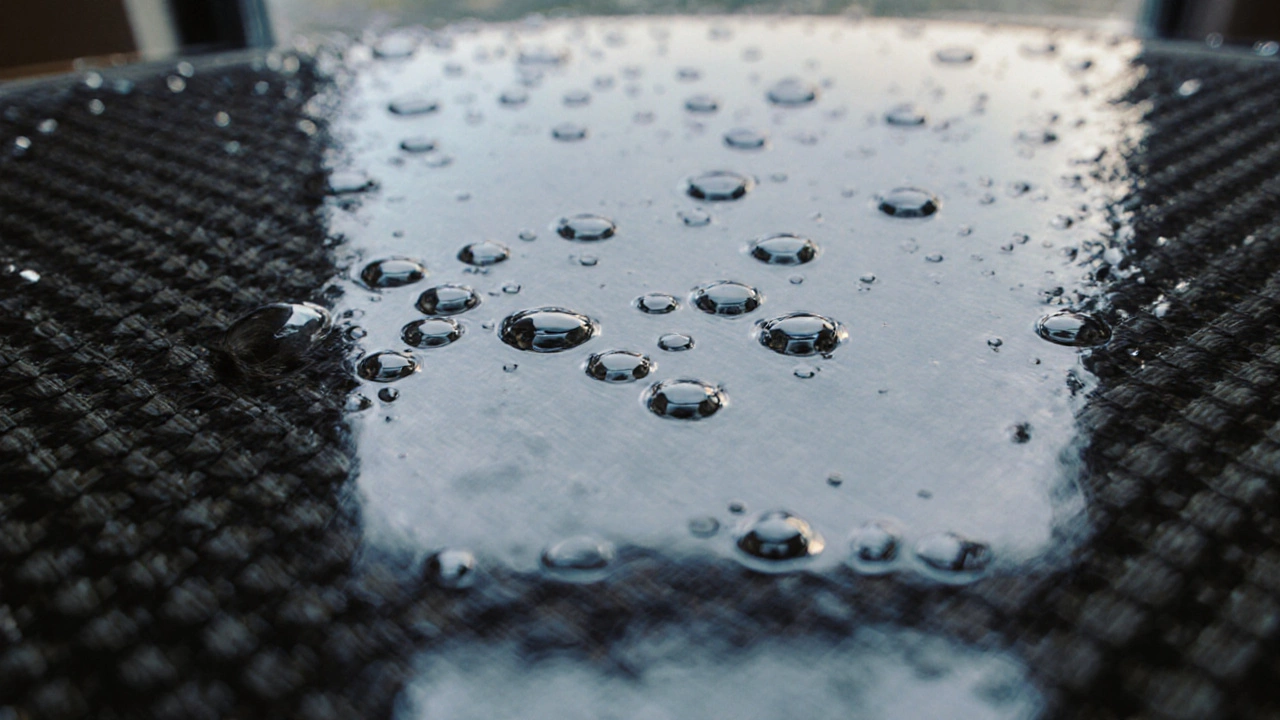Wet Carbon Fiber: What It Is and Why It Matters
When talking about wet carbon fiber, a resin‑saturated carbon‑fiber sheet that stays pliable until it cures. Also known as pre‑impregnated carbon fiber, it lets installers shape complex curves before the material hardens. Carbon fiber a lightweight composite made of woven carbon strands bound by resin is the base material, and the "wet" state simply means the resin is still active. This state makes it perfect for custom car parts, body panels, and interior trim because you can drape it over any surface and then heat‑cure it for a rigid finish.
One of the biggest concerns owners face is carbon fiber damage any crack, delamination, or surface abrasion that compromises the material's integrity. When wet carbon fiber cures with a single flaw, that imperfection can spread under stress, reducing strength. That’s why proper drying, temperature control, and handling are crucial. If you notice a nick before curing, you can sand it out, re‑wet the area, and let it cure again—something you can’t do with a solid, pre‑cured panel.
Durability, Lifespan, and Real‑World Performance
People often ask how long a wet‑finished part will last. The answer ties directly to carbon fiber lifespan the expected service life of a carbon‑fiber component under normal use. In everyday driving, a well‑cured panel can exceed 10 years with minimal wear, thanks to the material's high tensile strength and resistance to UV degradation when properly sealed. However, exposure to harsh chemicals or extreme temperature swings can accelerate resin breakdown, shortening that lifespan.
Another hot topic is whether carbon fiber can actually stop a bullet. While full‑scale bullet‑proof panels are engineered with multiple layers and specialized resins, standard wet carbon fiber offers carbon fiber bullet resistance a modest ability to slow or deform low‑velocity projectiles. The fibers themselves are strong, but the resin matrix is brittle, so a single high‑velocity round will still penetrate. For automotive safety, the material shines more in crash energy absorption than in ballistic protection.
So how does wet carbon fiber fit into car styling? Because the resin stays workable, technicians can blend it with acrylic paints, vinyl wraps, or even matte finishes to achieve unique looks. This flexibility means you can match a wrap’s color palette without sacrificing structural benefits. The key is to let the wet layer cure fully before applying any surface coating; otherwise, the finish may lift or bubble.
In practice, the workflow looks like this: lay the wet sheet over the target shape, use heat blankets or an oven to cure at the manufacturer’s recommended temperature, inspect for any blemishes, then seal with a protective clear coat. Each step builds on the previous one, creating a chain of quality checks that boost durability, reduce damage risk, and prolong lifespan.
Understanding these relationships—how wet carbon fiber enables custom shaping, how damage affects lifespan, and why bullet resistance is limited—gives you a realistic picture of what to expect from carbon‑fiber upgrades. Below you’ll find a curated set of articles that dig deeper into each of these angles, from legal considerations of car mods to detailed care guides for your carbon‑fiber components. Keep reading to get the actionable insights you need for a smarter, safer ride.

